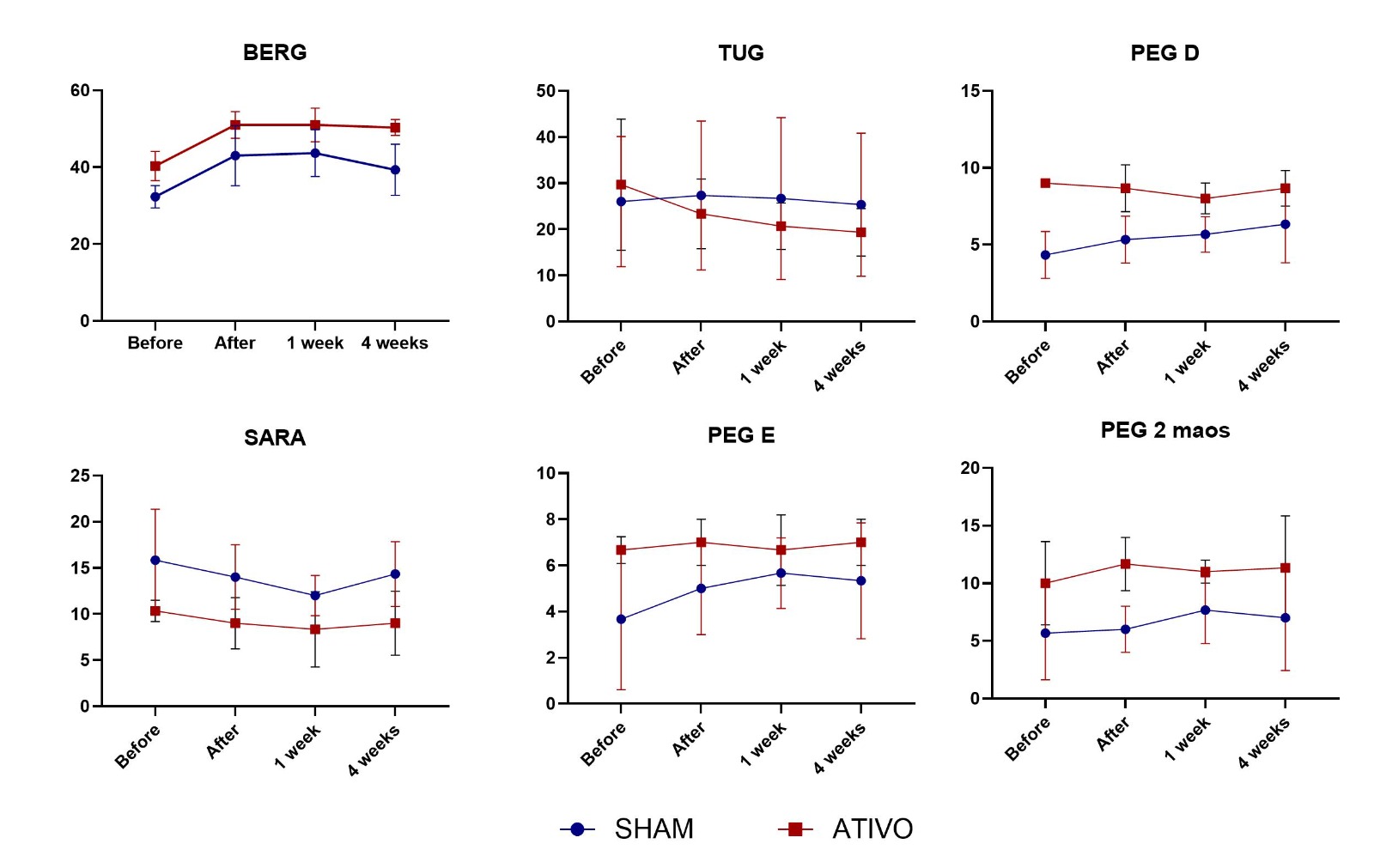Category: Ataxia
Objective: Ataxia is a neurological condition characterized by impaired coordination, balance, and motor control. While physiotherapy remains a cornerstone in SCA 3 management, emerging therapies such asTsMS could offer potential benefits. This study aims to evaluate the short-term effects of TsMS on motor function, coordination, and balance in patients with ataxia, particularly SCA 3, using standardized assessment scales.
Background: TsMS presents a novel therapeutic strategy aimed at modulating neural activity within the spinal cord, particularly targeting regions involved in ataxia pathophysiology. By delivering electrical impulses to specific spinal cord segments, transmedullary stimulation seeks to enhance neural plasticity, restore motor function, and ameliorate ataxia symptoms.
Method: This case series investigates six patients diagnosed with SCA 3, aged between 35 and 52 years. It explores the efficacy of TsMS in ataxia rehabilitation, comparing three patients who underwent the T3-T4 stimulation procedure with three who did not, all receiving physiotherapy.
Patients were assessed at four time points: pre-intervention, 4 days post-intervention, 1 week post-intervention, and 4 weeks post-intervention. Assessment scales utilized included the Berg Balance Scale (BERG), Timed Up and Go Test (TUG 3M), Scale for the Assessment and Rating of Ataxia (SARA), and the Postural Assessment Scale for Stroke Patients (PEAG Board). These assessments offer a comprehensive insight into the short-term effects of TsMS on motor function, coordination, and balance in ataxic patients.
Results: ANOVA analysis unveiled potential enhancements in gait speed as assessed by the TUG scale, depicted in the graphic below. This observed improvement may be attributed to an effect over sensory afferents related to gait, and sparing or absence of effect on upper limbs related pathways. However, no significant differences were observed in the other evaluated domains, including balance, motor coordination, ataxia severity, and functional abilities between groups. This finding could suggest a very strong placebo effect.
Conclusion: Research with larger sample sizes is warranted to validate findings and determine the procedure’s long-term efficacy and safety in ataxia rehabilitation. Integrating innovative therapies like TsMS into comprehensive management strategies may offer novel avenues for improving outcomes in patients with ataxia.
Graphic
References: 1. Yin L, Wang X, Chen L, Liu D, Li H, Liu Z, Huang Y, Chen J. Repetitive transcranial magnetic stimulation for cerebellar ataxia: a systematic review and meta-analysis. Front Neurol. 2023 Jul 7;14:1177746. doi: 10.3389/fneur.2023.1177746. PMID: 37483443; PMCID: PMC10360185.
2. Schmitz-Hübsch T, Montcel STD, Baliko L, Berciano J, Fancellu R. Scale for the assessment and rating of ataxia: development of a new clinical scale. Neurology. (2006) 66:1717–20. 10.1212/01.wnl.0000219042.60538.92
3. Luo D, Wan X, Liu J, Tong T. Optimally estimating the sample mean from the sample size, median, mid-range and/or mid-quartile range. Stat Methods Med Res. (2015) 27:1785–805. 10.1177/0962280216669183
To cite this abstract in AMA style:
K. Silveira Massruha, R. Bernhart Carra, J. Simões, G. Nunes Simões, J. Reis Menezes, V. Zanesi Maciel, M. Belo Silva, P. Medeiros Lacerda, T. Gonçalves Guimarães, E. Reis Barbosa, R. Gisbert Cury. Effects of Transpinal Magnetic Stimulation (TsMS) in Patients Diagnosed with Spinocerebellar Ataxia 3 (SCA 3) [abstract]. Mov Disord. 2024; 39 (suppl 1). https://www.mdsabstracts.org/abstract/effects-of-transpinal-magnetic-stimulation-tsms-in-patients-diagnosed-with-spinocerebellar-ataxia-3-sca-3/. Accessed December 16, 2025.« Back to 2024 International Congress
MDS Abstracts - https://www.mdsabstracts.org/abstract/effects-of-transpinal-magnetic-stimulation-tsms-in-patients-diagnosed-with-spinocerebellar-ataxia-3-sca-3/

